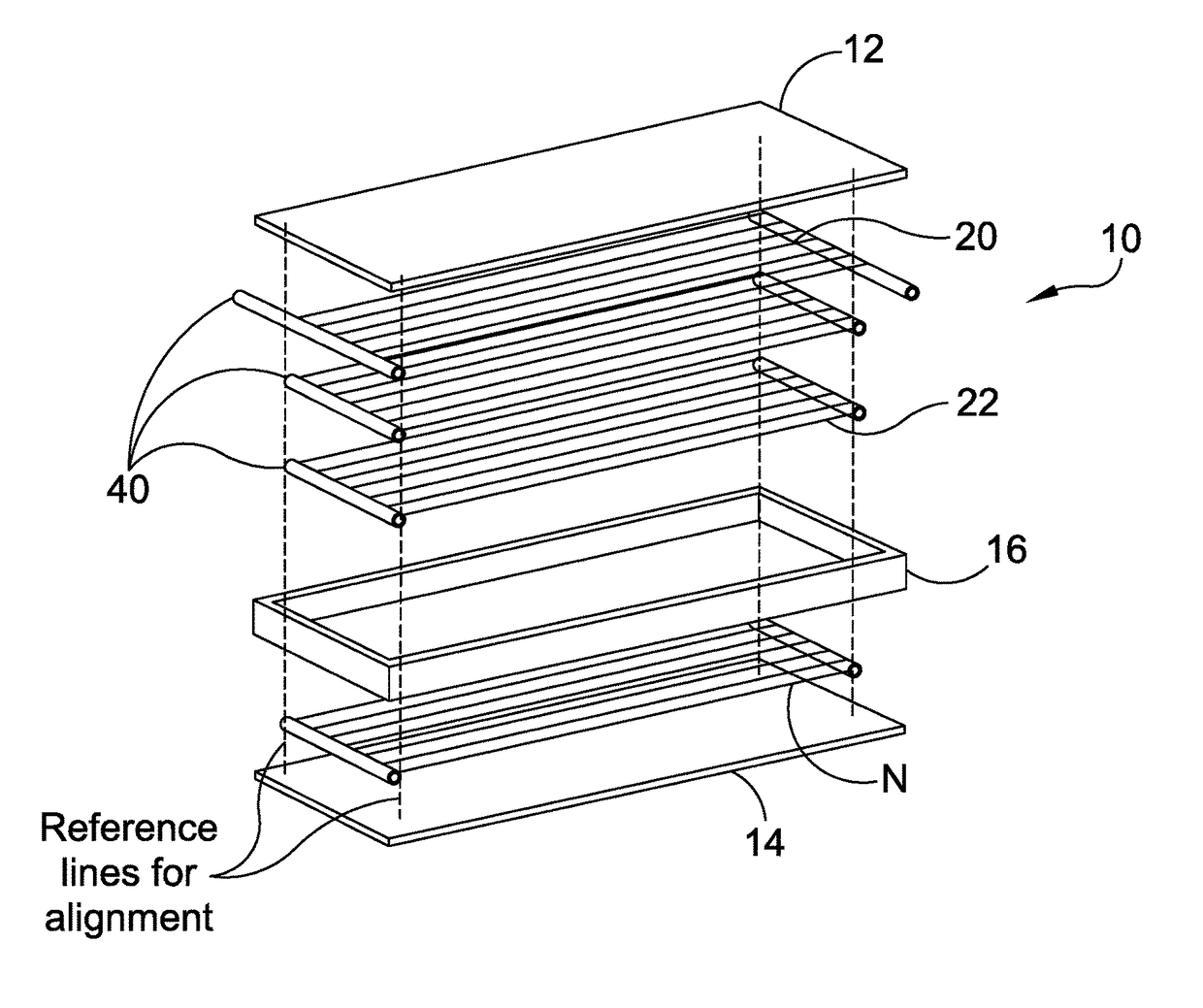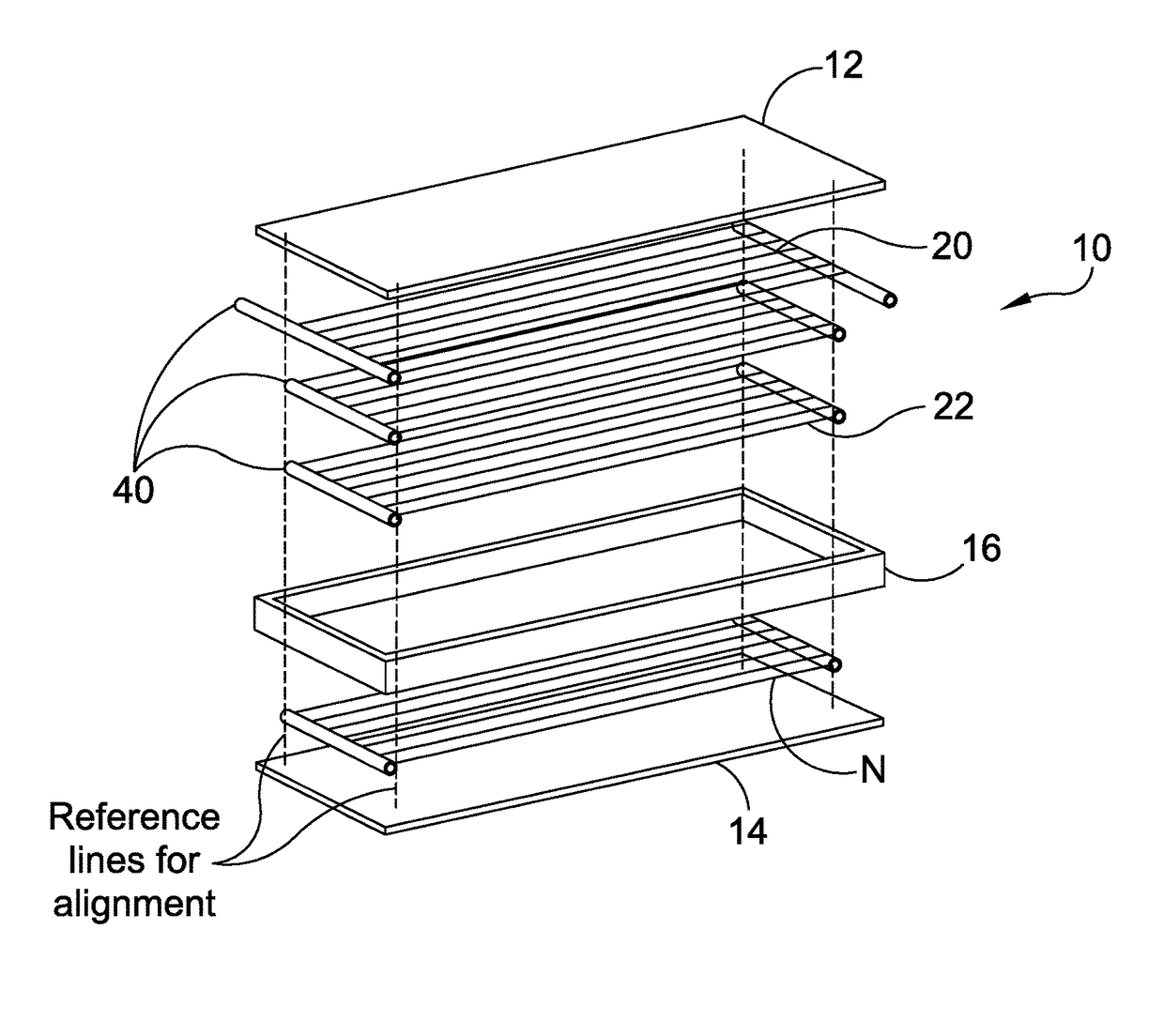Passive mode carbon nanotube underwater acoustic transducer
a carbon nanotube, passive mode technology, applied in the direction of transducer details, electrical transducers, nanotechnology, etc., can solve the problems of inability to reciprocate thermo-acoustic process, inability to supply heat and shine light to the same electric bulb in order to generate electrical energy back, etc., to achieve better acoustic receiving sensitivity
- Summary
- Abstract
- Description
- Claims
- Application Information
AI Technical Summary
Benefits of technology
Problems solved by technology
Method used
Image
Examples
Embodiment Construction
[0032]In the Figure, a multi-sheet carbon nanotube (CNT) material assembly or passive transducer 10 of the present invention is shown. The CNT transducer 10 comprises mechanical, acoustical and electrical sections.
[0033]The mechanical section includes a first shell 12 and a second shell 14. Unlike with the assembly of an active acoustic carbon nanotube material transducer that transmits; the shells of the passive transducer 10 do not have to be high temperature rated. As such, the first shell 12 and the second shell 14 can be made of urethane, mylar or plastic with the thickness of the shells based on known durability requirements as protective housing for the carbon nanotubes and acoustic receiving capabilities of the nanotubes but not for high temperature requirements. For example: the first (top) shell 12 and the second (bottom) shell 14 can be 0.005 inches to a 0.01 inch thick urethane sheet. The thicknesses of the top shell 12 and bottom shell 14 can vary.
[0034]Materials such a...
PUM
| Property | Measurement | Unit |
|---|---|---|
| thickness | aaaaa | aaaaa |
| electric impedances | aaaaa | aaaaa |
| electric impedances | aaaaa | aaaaa |
Abstract
Description
Claims
Application Information
 Login to View More
Login to View More - R&D
- Intellectual Property
- Life Sciences
- Materials
- Tech Scout
- Unparalleled Data Quality
- Higher Quality Content
- 60% Fewer Hallucinations
Browse by: Latest US Patents, China's latest patents, Technical Efficacy Thesaurus, Application Domain, Technology Topic, Popular Technical Reports.
© 2025 PatSnap. All rights reserved.Legal|Privacy policy|Modern Slavery Act Transparency Statement|Sitemap|About US| Contact US: help@patsnap.com


